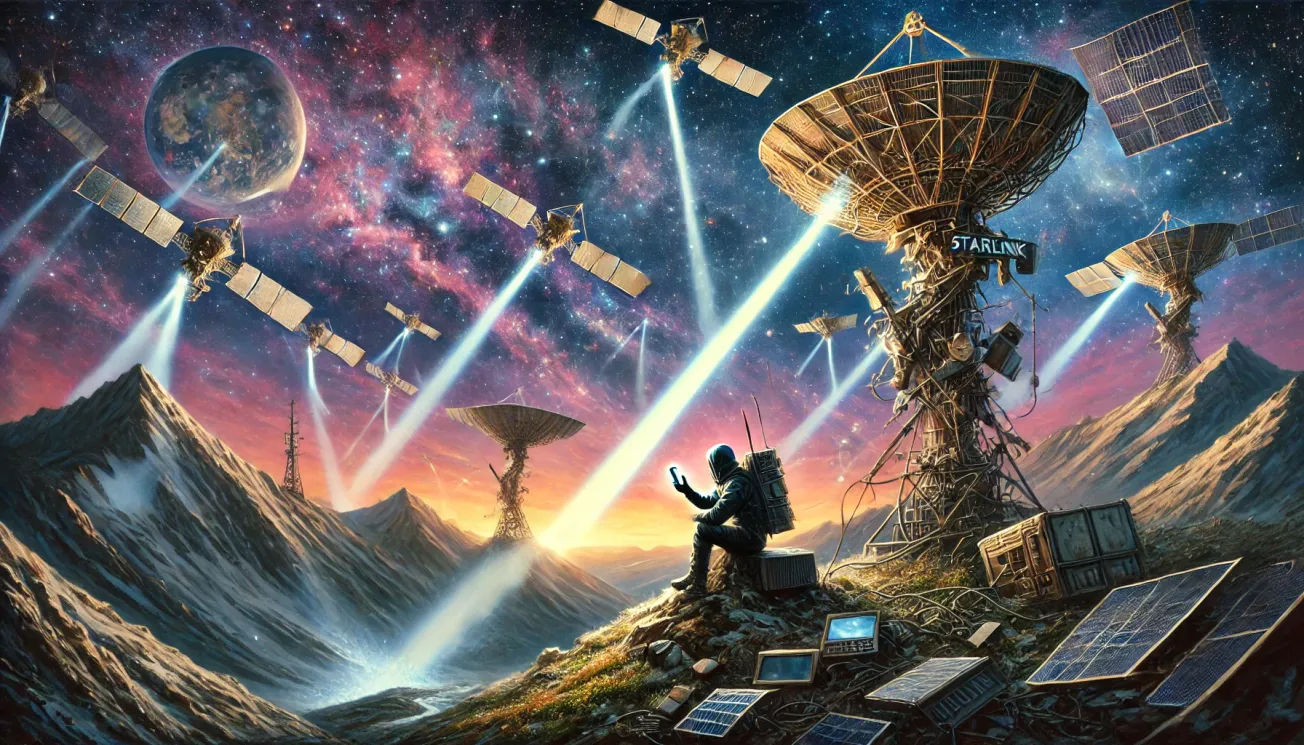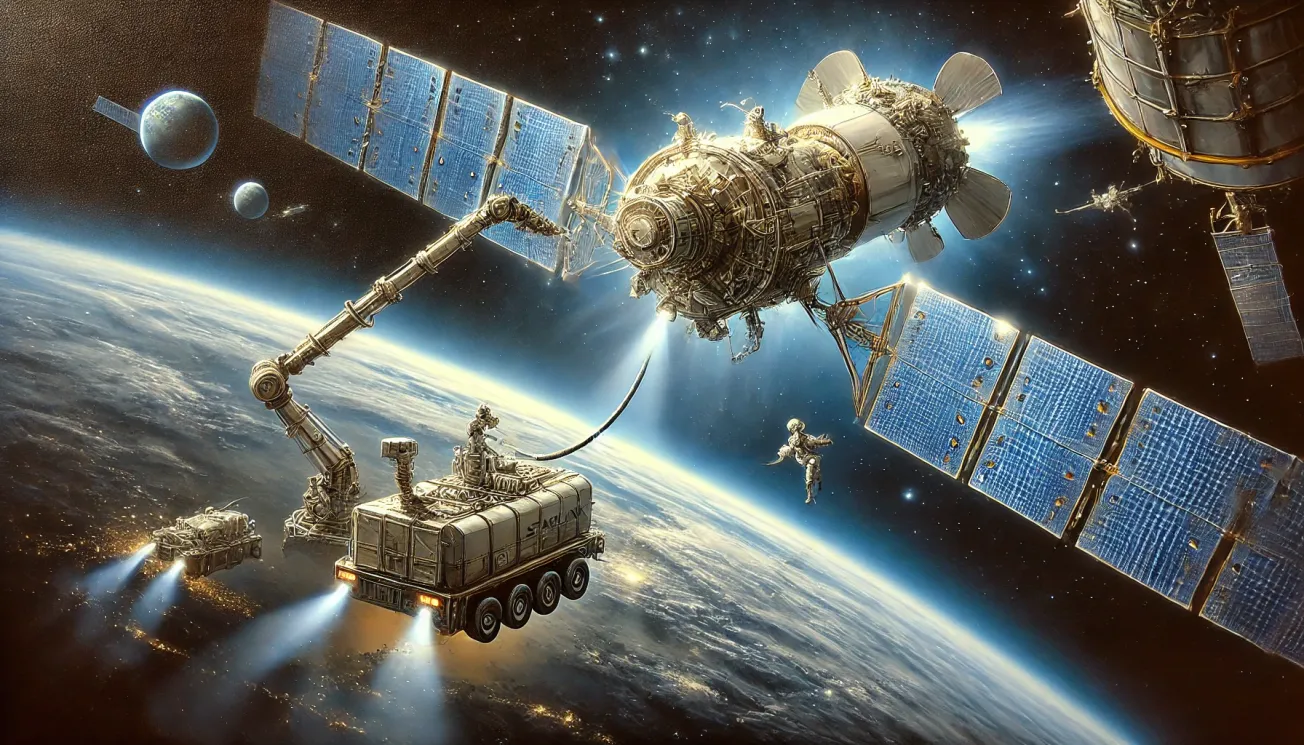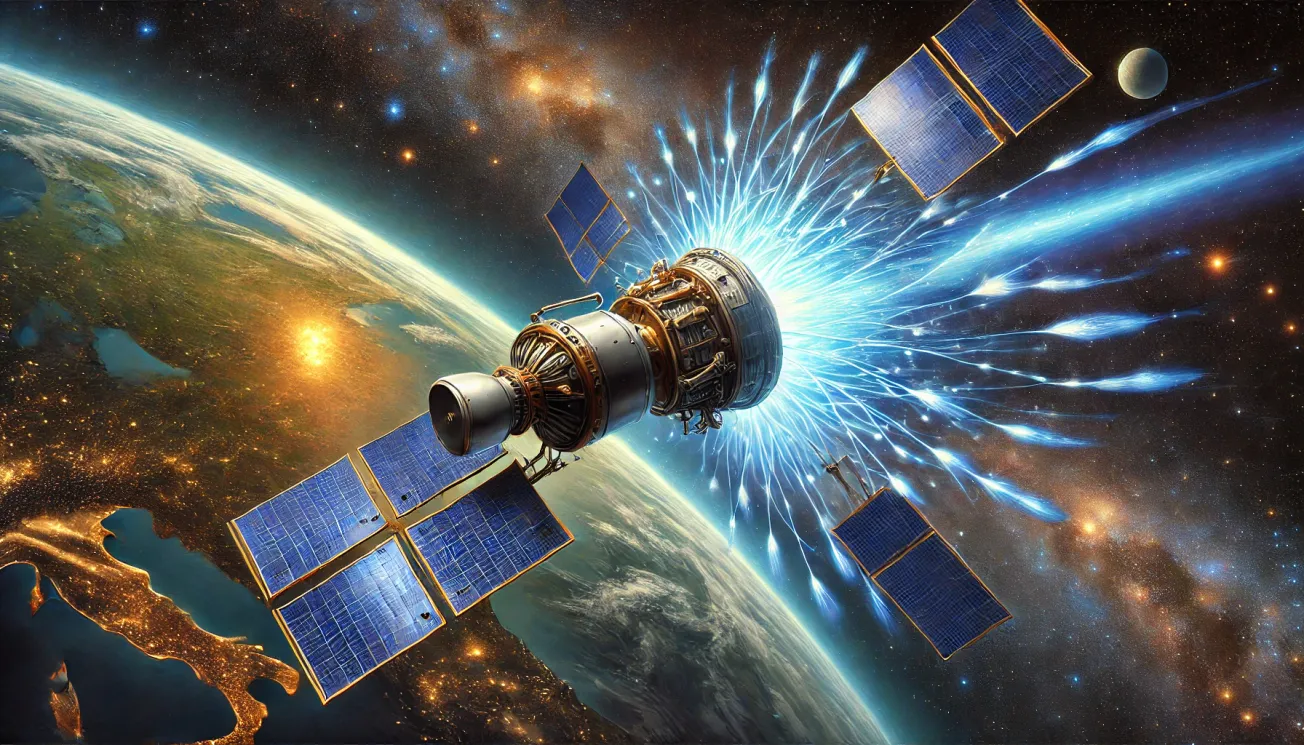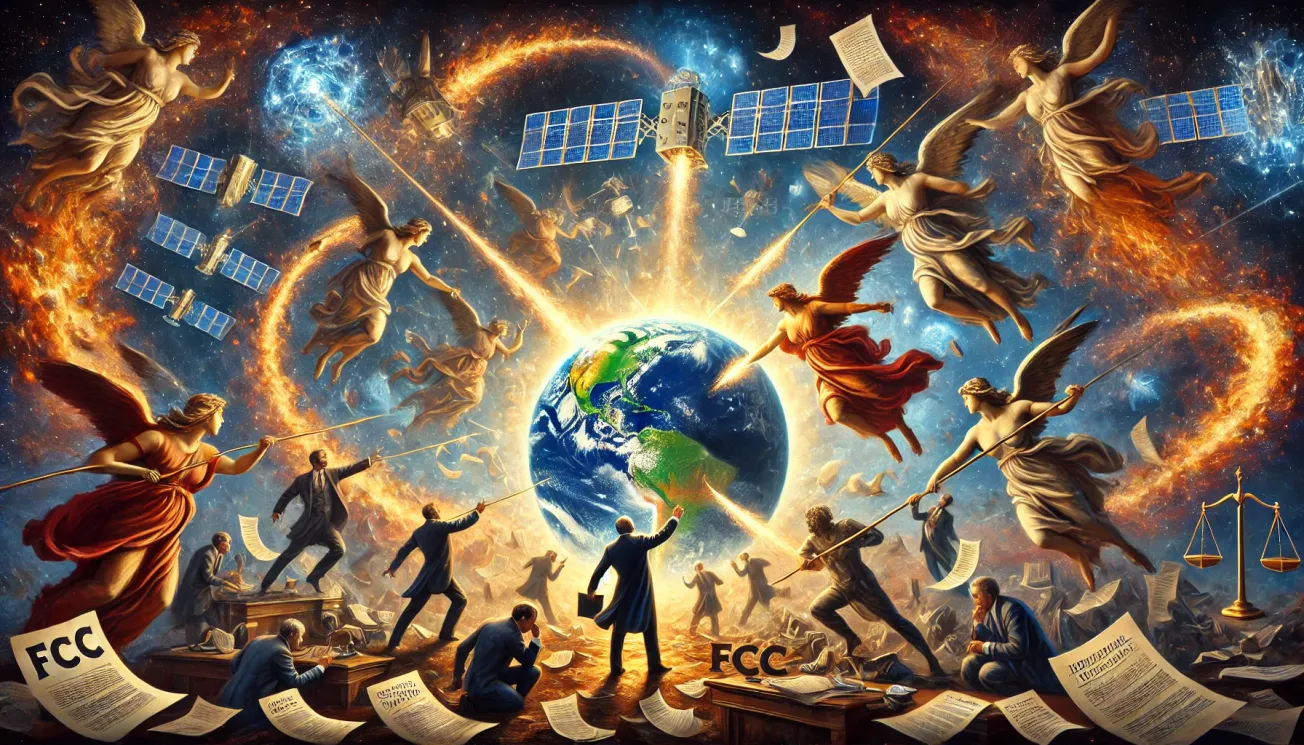Table of Contents
Introduction
Imagine being able to send a text, make a call, or even browse the internet from anywhere on the planet—no cell towers required. That’s the promise of Starlink’s Direct-to-Cell technology, an ambitious new service from SpaceX that aims to revolutionize mobile connectivity by enabling standard smartphones to connect directly to satellites in low Earth orbit (LEO).
For decades, satellite phones have existed as a niche product, requiring bulky, specialized devices with high costs and limited availability. But with Direct-to-Cell, SpaceX is changing the game, offering a solution that works with ordinary smartphones and seamlessly integrates with existing mobile networks.
The impact of this technology is massive. Rural communities, remote workers, travelers, and emergency responders will no longer be dependent on traditional cell towers. Whether you’re in the middle of the ocean, deep in the mountains, or in a disaster-stricken area where infrastructure is down, Direct-to-Cell could ensure you stay connected.
But how does it actually work? What makes it different from traditional mobile networks? And will it really eliminate dead zones forever?
In this article, we’ll break down everything you need to know about Starlink’s Direct-to-Cell technology, including how it works, its advantages, potential challenges, competition, and what the future of mobile connectivity might look like.
What is Starlink Direct-to-Cell?
Starlink Direct-to-Cell is a revolutionary service designed to allow standard mobile phones to connect directly to satellites, eliminating the need for ground-based cell towers. Unlike traditional satellite phones, which require specialized devices, this technology works with ordinary smartphones, using the same cellular frequencies already used by mobile carriers.
At its core, Direct-to-Cell is an extension of Starlink’s existing satellite network, but with upgraded satellites that function as cell towers in space. These satellites are capable of transmitting cellular signals to mobile devices on Earth, enabling users to send texts, make calls, and eventually access data—no additional hardware required.
How is this Different from Regular Satellite Internet?
Starlink has already been providing high-speed satellite internet for homes, businesses, and vehicles using a dedicated Starlink dish. However, Direct-to-Cell removes the need for any external dish or receiver—instead, your smartphone connects to Starlink satellites just like it would to a traditional cell tower.
Key Features of Starlink Direct-to-Cell
✔ Works with Existing Smartphones – No need for a special satellite phone or extra hardware.
✔ Uses Starlink’s Low Earth Orbit Satellites – Provides lower latency and better connectivity than traditional satellite networks.
✔ No Need for Ground-Based Cell Towers – Works anywhere on Earth, even in the most remote locations.
✔ Seamless Carrier Integration – Designed to work alongside existing mobile networks, not replace them.
Currently, the initial rollout of Direct-to-Cell is focused on text messaging, with voice calls and mobile data expected to follow in the coming years. SpaceX has already partnered with T-Mobile in the U.S. and is working with other telecom providers globally to integrate this service into their networks.
How is Direct-to-Cell Different from Traditional Mobile Networks?
At first glance, Starlink Direct-to-Cell might seem like just another extension of existing mobile networks—but it’s actually a fundamental shift in how cell service works. Unlike traditional networks that rely on ground-based cell towers, Direct-to-Cell connects smartphones directly to satellites in low Earth orbit (LEO), creating a global coverage system that works virtually anywhere.
Here’s how it differs from conventional cellular networks:
✔ 1. No Need for Ground-Based Cell Towers
Traditional mobile networks require an extensive network of cell towers, which relay signals between your phone and the broader internet. However, in remote or rural areas, cell towers are often too far apart or completely absent, leading to dead zones.
✅ Direct-to-Cell eliminates this issue by making satellites function as floating cell towers, meaning you can get service even in the middle of the ocean, deserts, or mountains.
✔ 2. Uses Low Earth Orbit (LEO) Satellites Instead of Geostationary Satellites
Some satellite phone services (like Iridium or Inmarsat) already provide global coverage, but they rely on geostationary satellites positioned 35,786 km (22,236 miles) above Earth.
🚀 Starlink’s satellites orbit at just ~550 km (342 miles), making them:
- Much closer to Earth → Reducing latency (delay in signal transmission).
- More responsive → Enabling real-time communication similar to regular mobile networks.
- Able to handle more traffic → Due to the large number of satellites in orbit.
This means Starlink Direct-to-Cell will offer a much better experience than traditional satellite phones, with lower latency and better call quality.
✔ 3. Works with Standard Smartphones
Traditional satellite phones require bulky, expensive devices with external antennas to connect to satellites. But Starlink Direct-to-Cell works with regular smartphones—no additional hardware is needed.
📱 How?
- Starlink satellites are designed to broadcast cellular signals using the same frequencies that existing mobile networks use.
- Phones will be able to roam onto the Starlink network when they are out of range of ground-based towers.
- This will seamlessly integrate with telecom carriers, meaning users won’t have to switch networks manually.
This makes Starlink’s service far more user-friendly and accessible compared to legacy satellite communications.
✔ 4. A Hybrid Approach: Complements, Not Replaces, Existing Networks
Starlink’s goal is not to replace traditional mobile networks, but rather to fill in coverage gaps where regular cell towers can’t reach.
🔗 How It Works With Existing Carriers:
- Telecom companies (like T-Mobile in the U.S.) are partnering with Starlink to integrate satellite connectivity into their networks.
- Users on supported plans will automatically switch to Starlink Direct-to-Cell when outside of normal coverage areas.
- Eventually, this could eliminate dead zones entirely without requiring major infrastructure expansion.
✔ 5. Initial Limitations: Gradual Rollout of Features
While text messaging will be the first available feature, voice calls and data connectivity will take longer to roll out.
📅 Expected Rollout Plan:
✔ 2024 – Text messaging support begins.
✔ 2025-2026 – Voice calling and basic mobile data support added.
✔ Future Plans – Potential for full high-speed data service, allowing full internet browsing and video streaming.
Why This Matters
For decades, satellite-based mobile service has been limited to expensive, slow, and highly specialized devices. Starlink Direct-to-Cell changes that, making satellite connectivity as easy as using a regular cell phone.
✅ Eliminates dead zones without expensive infrastructure.
✅ Works seamlessly with existing smartphones.
✅ Expands connectivity to rural areas, oceans, and disaster zones.
What Will Direct-to-Cell Be Used For?
Starlink’s Direct-to-Cell technology is more than just a convenience—it has the potential to reshape global communication by providing mobile connectivity in places where traditional networks fail. From emergency response teams to rural communities, this technology could serve millions of people who currently lack reliable mobile service.
✔ 1. Emergency Services & Disaster Relief
One of the most critical applications of Direct-to-Cell is in emergency situations where traditional infrastructure is damaged or unavailable.
🚨 How It Helps:
- After natural disasters (hurricanes, earthquakes, wildfires), cell towers are often destroyed or overloaded. Starlink’s satellites would keep first responders and civilians connected even when ground networks fail.
- Search-and-rescue teams in remote areas (mountains, forests, open ocean) could use satellite connectivity to coordinate efforts and save lives.
- Military and government agencies could rely on satellite mobile service for secure communications in conflict zones or remote operations.
✅ Impact: Disaster recovery efforts could be faster and more coordinated, reducing response times and saving lives.
✔ 2. Rural & Remote Areas
Even in developed countries, millions of people still live in areas with poor or no cell service.
🏡 Who Benefits?
- Farmers and ranchers working in rural areas with no reliable coverage.
- Indigenous communities in remote regions.
- Remote workers, digital nomads, and vanlifers who need connectivity off-grid.
Instead of waiting years for telecom companies to build new towers, Starlink’s satellites bring instant coverage to these locations.
✅ Impact: Expands access to mobile banking, education, healthcare, and economic opportunities for underserved communities.
✔ 3. Maritime & Aviation Connectivity
Airlines and shipping companies have long struggled with poor connectivity for passengers and crew members. Direct-to-Cell could change that.
🚢 For Ships & Boats:
- Commercial shipping crews could stay connected even in the middle of the ocean.
- Cruise ship passengers could use regular mobile networks without expensive satellite phones.
✈️ For Airlines:
- In-flight connectivity could become cheaper and more reliable than traditional satellite WiFi.
- Passengers could send texts and make calls directly from their phones during flights.
✅ Impact: A future where airline passengers, sailors, and global travelers never lose mobile service.
✔ 4. Outdoor Adventurers & Extreme Sports
For hikers, climbers, campers, and explorers, staying connected in wilderness areas has always been a challenge.
🏕 How Direct-to-Cell Helps:
- Solo travelers in national parks and remote trails can call for help in case of emergencies.
- Extreme sports athletes (climbers, skiers, divers) can stay connected without relying on GPS beacons.
- Expeditions to Antarctica, the Amazon, or the Himalayas will have full mobile access for the first time ever.
✅ Impact: More people can safely explore the world, knowing they have reliable connectivity.
✔ 5. Military & Security Applications
Governments and defense agencies need secure, uninterrupted communication, even in regions with poor infrastructure.
🛰 Potential Uses:
- Tactical military operations in remote areas.
- Disaster response teams in war zones or unstable regions.
- Secure communications for intelligence and diplomatic missions.
✅ Impact: Increased security and connectivity for defense agencies worldwide.
✔ 6. Future Possibilities: A Truly Global Mobile Network?
If Starlink expands beyond text and voice calling to full mobile data, it could eventually replace traditional mobile networks altogether.
🌍 Potential Future Use Cases:
- Fully functional high-speed mobile internet anywhere on Earth.
- Mobile plans that work seamlessly across every country—no more roaming charges.
- Integration with smartphones, self-driving cars, IoT devices, and smart homes.
✅ Impact: The end of cellular dead zones, forever.
Why This Matters
Direct-to-Cell is not just about better phone service—it has the potential to connect the entire planet, breaking down barriers to communication and providing lifesaving, game-changing connectivity where it’s needed most.
How Does Direct-to-Cell Work Technically?
While the idea of using satellites as cell towers sounds futuristic, the technology behind Starlink’s Direct-to-Cell service is built on existing mobile network principles—just adapted for space. This section breaks down how it works from signal transmission to real-world performance expectations.
✔ 1. Starlink Satellites as Cell Towers
Unlike traditional cell networks, where ground-based towers relay signals, Direct-to-Cell uses Starlink’s satellites in low Earth orbit (LEO) to act as floating cell towers.
🛰 How It Works:
- The satellite transmits a cellular signal to your phone, similar to how a regular cell tower would.
- Your phone sends signals back to the satellite, just as it would with a standard tower.
- The satellite then relays the signal to a ground station, which connects to the global internet or mobile carrier networks.
This allows continuous mobile coverage, even in areas with no physical towers.
✔ 2. What Frequencies & Spectrum Does It Use?
Direct-to-Cell operates using existing cellular frequencies, which means it can work with regular smartphones.
📡 Key Details:
- Starlink satellites are equipped with advanced phased-array antennas, allowing them to communicate directly with phones.
- SpaceX has partnered with telecom providers like T-Mobile in the U.S. to use part of their licensed spectrum.
- The service will likely start on low-band LTE (4G) frequencies, which provide wider coverage but lower speeds.
🔗 Why This Matters: Since Starlink isn’t introducing new frequencies, existing phones don’t need new hardware to connect—a huge advantage over previous satellite networks.
✔ 3. Data Speeds & Latency: What Can We Expect?
🚀 How Fast Will It Be?
- Initial service will be limited to text messaging (~2024).
- Voice calling and basic mobile data (~2025-2026).
- Higher speeds and full 4G/LTE or 5G data connectivity could follow later.
📶 Latency (Signal Delay):
- Traditional geostationary satellite networks (like HughesNet) have 600+ ms latency due to their high orbit (~35,786 km).
- Starlink’s LEO satellites orbit at ~550 km, allowing for latency closer to 30-50 ms—comparable to 4G LTE speeds on Earth.
⚠ Limitations:
- Initial Direct-to-Cell data speeds will likely be slower than regular mobile networks, due to limited bandwidth per satellite.
- As more satellites are launched with higher capacity, speeds will improve over time.
✔ 4. How Many People Can Connect at Once?
One of the biggest challenges for Direct-to-Cell is network capacity—a single satellite can only support a limited number of users at the same time.
🌍 Scaling the Network:
- Starlink plans to launch thousands more satellites to increase capacity and allow more simultaneous connections.
- Satellites will handoff connections as they move across the sky, similar to how phones switch between cell towers.
- Future iterations of Starlink satellites may include larger antennas to handle more connections at once.
✔ 5. How Does It Handle Interference & Network Handoffs?
Since satellites are constantly moving, Starlink must ensure that:
✔ Phones can seamlessly switch from one satellite to another without dropping calls.
✔ The network doesn’t interfere with existing ground-based mobile networks.
🔗 How This Works:
- Satellites will coordinate handoffs using advanced beamforming technology, similar to how cell towers hand off calls.
- Starlink relies on partnerships with mobile carriers to integrate their network without disrupting terrestrial mobile services.
📡 Regulatory Challenges:
- Some governments limit satellite-based mobile services, requiring special licensing.
- SpaceX is actively working with regulators worldwide to ensure the service can expand globally.
Why This Matters
✅ Starlink’s Direct-to-Cell service works with regular smartphones—no extra hardware needed.
✅ Low Earth orbit satellites provide lower latency than traditional satellite networks.
✅ The technology is scalable, meaning performance will improve as more satellites are deployed.
What Phones & Carriers Will Support Direct-to-Cell?
One of the most exciting aspects of Starlink’s Direct-to-Cell technology is that it works with standard smartphones—no need for special satellite phones, external antennas, or new hardware. But which carriers and devices will support it, and how will users connect to the network?
✔ 1. Will Direct-to-Cell Work on All Smartphones?
Yes—Direct-to-Cell is designed to work with existing smartphones that support 4G LTE or newer technology.
📱 What This Means:
- Users won’t need to buy a new phone or install external hardware.
- iPhones, Samsung Galaxy, Google Pixel, and other modern smartphones should work.
- The connection will function like roaming onto another mobile network, automatically switching to Starlink when no traditional cell service is available.
🔗 Why This Matters: This makes Direct-to-Cell far more accessible than traditional satellite phones, which require expensive, specialized devices.
✔ 2. Which Carriers Have Partnered with Starlink?
SpaceX has started forming strategic partnerships with telecom providers worldwide to integrate Direct-to-Cell into existing mobile networks.
🌍 Confirmed Partners So Far:
- T-Mobile (United States) – First announced partnership; Starlink will use T-Mobile’s mid-band spectrum for satellite connectivity.
- Optus (Australia) – Will bring nationwide satellite mobile coverage to remote regions.
- Rogers (Canada) – Plans to expand connectivity across rural and remote areas of Canada.
- Other Global Carriers Expected – SpaceX is in talks with Europe, Latin America, and Asia-Pacific telecom providers to expand service.
📡 How Carrier Partnerships Work:
- Starlink will act as a backup network when a user is out of range of cell towers.
- Users won’t need a separate Starlink subscription—it will be integrated into their mobile plans.
- Some carriers may offer Direct-to-Cell as a premium feature for an additional cost.
✔ 3. Will It Require a New SIM Card or Software Update?
Most users will not need a new SIM card, as Starlink’s Direct-to-Cell network will function as a roaming partner for existing carriers.
However, some devices may require:
✅ A software update to enable satellite connectivity.
✅ Carrier settings update to allow network switching.
🔗 Example: Apple introduced Emergency SOS via satellite on iPhone 14, which required a firmware update to activate. A similar update process may be needed for Direct-to-Cell services.
✔ 4. What Features Will Be Available at Launch?
Starlink Direct-to-Cell is rolling out in phases, starting with basic services before expanding to full mobile data coverage.
📅 Planned Rollout Timeline:
✔ 2024: Text messaging support (SMS & select messaging apps).
✔ 2025: Voice calling and basic mobile data (expected to be slower than traditional LTE).
✔ 2026 & Beyond: Higher-speed mobile data, eventually allowing full internet browsing and video streaming.
🚀 What This Means:
- At first, it will be a backup service—good for emergencies but not a full replacement for cell networks.
- Over time, as more satellites are launched, data speeds will improve, making it a viable alternative to traditional mobile networks.
Why This Matters
✅ No need for new hardware—works with existing smartphones.
✅ Seamless integration with major mobile carriers.
✅ Text messaging first, with voice & data rolling out later.
When Will Starlink Direct-to-Cell Be Available?
Starlink Direct-to-Cell is being rolled out in phases, with some features launching as early as 2024, while others will take a few more years to develop fully. SpaceX is testing and expanding the service gradually, ensuring network stability and working with telecom partners to integrate it into existing mobile networks.
✔ 1. Expected Rollout Timeline
📅 Current Timeline for Starlink Direct-to-Cell:
✔ 2024 – Text Messaging Only
- Users on supported carriers (like T-Mobile in the U.S.) will be able to send and receive SMS messages via satellite when outside traditional coverage areas.
- This is the first phase of testing before enabling more advanced services.
✔ 2025 – Voice Calls & Basic Mobile Data
- Direct-to-Cell will support voice calls and low-bandwidth data, similar to 2G or early 3G speeds.
- This will allow emergency calls, essential internet access, and limited app use.
✔ 2026 & Beyond – Faster Mobile Data (4G LTE / 5G Capabilities)
- Starlink aims to improve bandwidth, allowing higher-speed data, video calls, and even light video streaming.
- With more satellites in orbit, faster speeds and better coverage will become possible.
🚀 Long-Term Goal: Full 4G LTE-like speeds worldwide, with seamless mobile coverage everywhere on Earth.
✔ 2. Which Countries Will Get It First?
🌍 Initial rollout is happening in:
- United States 🇺🇸 (T-Mobile)
- Australia 🇦🇺 (Optus)
- Canada 🇨🇦 (Rogers)
- United Kingdom & Europe 🇬🇧 🇪🇺 (Discussions underway with telecom providers)
- South America & Asia-Pacific 🌏 (Expected in later phases)
📡 Why a Gradual Rollout?
- SpaceX needs to ensure regulatory approval in each country before launching service.
- More satellites must be equipped with Direct-to-Cell capability for full global coverage.
- Carrier partnerships are being established to integrate the service smoothly into existing networks.
✔ 3. What Will Early Users Experience?
📶 Early adopters will:
- Only be able to send texts in 2024—no voice calls or data at first.
- Experience slower speeds at launch, improving as more satellites are deployed.
- Be part of a gradual network expansion, helping SpaceX test and refine the service.
⚠ Potential Limitations at First:
- Not all regions will get coverage immediately.
- Indoor connectivity may be weak—best performance will be in open areas.
- Voice calls and data speeds will start slow and improve over time.
Why This Matters
✅ Starlink Direct-to-Cell is launching in 2024, with text messaging available first.
✅ Voice and data services will roll out in 2025-2026.
✅ Global expansion depends on regulatory approvals and carrier partnerships.
Starlink’s Competition in Direct-to-Cell Technology
While Starlink pioneered the concept of Direct-to-Cell connectivity at scale, it is not the only company working on satellite-based mobile services. Several competitors—ranging from telecom giants to space startups—are developing similar technologies. The race to eliminate dead zones and create a truly global mobile network is heating up.
✔ 1. AST SpaceMobile: The Closest Direct Competitor
🚀 AST SpaceMobile is building a satellite network that offers full 4G and 5G broadband connectivity directly to smartphones.
📡 How It Compares to Starlink:
✔ Larger satellites – AST SpaceMobile uses huge satellites with massive antennas, designed to provide stronger mobile signals than Starlink’s smaller satellites.
✔ Full broadband service planned from the start – Unlike Starlink (which is starting with text messaging), AST SpaceMobile aims to provide full-speed mobile data, voice, and video from launch.
✔ Already demonstrated live voice & video calls – In April 2023, AST successfully tested a direct satellite-to-smartphone 4G call using an unmodified Samsung Galaxy S22.
⚠ Challenges:
- AST SpaceMobile’s satellites are much more expensive to launch than Starlink’s, making large-scale deployment difficult.
- Requires partnerships with mobile carriers, just like Starlink, to use existing cellular spectrum.
- May take longer to scale due to high satellite costs and regulatory challenges.
🌍 Carrier Partners: AT&T (U.S.), Vodafone (Europe), Rakuten (Japan), among others.
✔ 2. Apple & Globalstar: Emergency SOS via Satellite
🍏 Apple has already brought limited satellite connectivity to iPhones, using Globalstar’s satellites for emergency messaging.
📡 How It Compares to Starlink:
✔ Already live on iPhone 14 and newer models.
✔ Supports emergency texting & location sharing—but not calls or regular messages.
✔ Uses traditional satellite networks (not LEO), so response times can be slow.
⚠ Limitations:
- Only works in emergencies.
- No direct internet or phone service—just basic emergency messaging.
- Limited to Apple devices (no Android support).
🌍 Available Worldwide for iPhone Users.
✔ 3. Other Telecom-Satellite Partnerships
📡 Multiple telecom companies are partnering with satellite providers to expand coverage in remote areas.
🚀 Key Players & Their Approach:
- Lynk Global – Working on a small satellite constellation that connects directly to phones, but still in early stages.
- Amazon’s Project Kuiper – Focused on satellite internet rather than direct-to-phone connectivity (competing more with Starlink’s home internet service).
- OneWeb – Partnering with telecom providers but primarily focused on broadband rather than mobile services.
🌍 These companies could challenge Starlink in specific regions or niche markets but are not yet as advanced in Direct-to-Cell technology.
✔ 4. Will Starlink Dominate, or Will Competition Heat Up?
📊 Starlink’s Advantages Over Competitors:
✅ Thousands of satellites already in orbit – Starlink has a massive head start on deployment.
✅ Lower-cost satellites & reusable rockets – Allows SpaceX to launch at a fraction of the cost of competitors.
✅ Global expansion underway – Already partnered with major carriers like T-Mobile, Optus, and Rogers.
⚠ Challenges Starlink Faces:
- AST SpaceMobile could offer better signal strength and faster speeds, competing for premium users.
- Regulatory approvals vary by country, slowing down Starlink’s expansion.
- Some telecom companies may choose to partner with competitors instead of Starlink.
🚀 Who Will Win?
- Starlink is positioned to dominate the early market due to its rapid deployment, but AST SpaceMobile and others could become strong competitors if they can scale fast enough.
Why This Matters
✅ Starlink is ahead, but competitors like AST SpaceMobile and Apple are entering the market.
✅ AST’s full-speed mobile broadband could be a serious challenge to Starlink’s slower rollout.
✅ Regulatory approvals and carrier partnerships will determine who expands fastest.
Challenges & Potential Issues with Direct-to-Cell
While Starlink’s Direct-to-Cell technology is groundbreaking, it is not without significant challenges. From technical limitations to regulatory hurdles, SpaceX will need to overcome several obstacles before the service can reach its full potential.
✔ 1. Bandwidth Limitations: Can the Network Handle Millions of Users?
One of the biggest concerns about Direct-to-Cell is network capacity—how many users can actually connect to a satellite at the same time?
📡 Potential Issues:
- Limited Bandwidth Per Satellite – Unlike ground-based cell towers, which are supported by fiber-optic backbones, satellites have limited bandwidth that must be shared among all connected users.
- Lower Data Speeds at First – Starlink’s initial Direct-to-Cell rollout will prioritize text messaging, with voice and data coming later. Even when data is available, it may be slower than traditional LTE or 5G networks.
- Congestion in High-Demand Areas – If too many people try to use the service at once (e.g., in a disaster zone), speeds could drop significantly.
🚀 Solution:
- SpaceX plans to launch thousands more satellites, increasing capacity over time.
- Future satellites could include larger antennas and higher bandwidth capabilities.
✔ 2. Regulatory & Governmental Hurdles
🌍 Each country has different laws regarding satellite communications, meaning Starlink must negotiate regulatory approval for every market it enters.
⚠ Challenges:
- Spectrum Licensing Issues – Starlink needs to lease mobile spectrum from telecom carriers, which requires regulatory approval in every country.
- Some Governments May Block the Service – Countries with tight internet restrictions (China, Russia, etc.) may refuse to allow Starlink Direct-to-Cell due to concerns over unregulated communication.
- International Space Regulations – As more satellites are launched, international bodies like the ITU (International Telecommunication Union) may introduce new restrictions on satellite-based mobile networks.
🚀 Solution:
- SpaceX is actively partnering with telecom providers (T-Mobile, Optus, Rogers) to navigate local regulations more easily.
- The company is engaging with international space regulators to ensure long-term approval for its network.
✔ 3. Interference with Existing Cell Networks
📶 Will Direct-to-Cell disrupt existing mobile networks?
- Since Starlink satellites will use existing cellular spectrum, there is concern that it could interfere with ground-based networks if not properly managed.
- Mobile carriers must carefully coordinate with Starlink to ensure smooth integration.
- Some telecom providers may resist Direct-to-Cell, fearing it could reduce demand for their traditional infrastructure.
🚀 Solution:
- Seamless roaming agreements with mobile carriers will help integrate the service without disrupting existing networks.
- Advanced network management tools will ensure Starlink doesn’t interfere with traditional mobile services.
✔ 4. Power Consumption & Device Compatibility
🔋 How will Direct-to-Cell affect battery life?
- Since phones will be connecting directly to satellites, battery drain may be higher than normal cell service.
- Older devices may struggle to maintain a stable connection in areas with weak satellite signals.
- Indoor usage may be limited—Direct-to-Cell works best in open areas with a clear view of the sky.
🚀 Solution:
- Future software updates may optimize battery performance for Direct-to-Cell connections.
- Improved satellite technology will help strengthen signals, reducing power strain on phones.
✔ 5. Pricing & Consumer Accessibility
💰 Will Direct-to-Cell be affordable for everyday users?
- It’s unclear whether Direct-to-Cell will be included in standard mobile plans or require a separate subscription.
- Some telecom providers may charge premium rates for satellite connectivity.
- If prices are too high, Direct-to-Cell may be limited to government, business, and emergency users, rather than everyday consumers.
🚀 Solution:
- SpaceX aims to keep costs low by integrating Direct-to-Cell into existing mobile plans.
- If demand is high, competition from AST SpaceMobile and others may drive prices down over time.
✔ 6. Space Congestion & Satellite Traffic Management
🛰 With thousands of satellites in orbit, will Direct-to-Cell contribute to space congestion?
- Starlink is already the largest satellite constellation in history, and adding more satellites raises concerns about collisions and debris buildup.
- Space agencies (NASA, ESA, and the FCC) are monitoring Starlink’s expansion, ensuring it does not create long-term risks for space operations.
🚀 Solution:
- Autonomous collision avoidance systems on Starlink satellites help prevent crashes.
- Deorbiting plans ensure that old or malfunctioning satellites will burn up in the atmosphere instead of lingering in space.
Why These Challenges Matter
✅ Bandwidth and coverage will improve over time as more satellites are launched.
✅ Regulatory approvals will determine how quickly the service expands worldwide.
✅ Pricing and carrier agreements will impact how accessible Direct-to-Cell is for consumers.
Conclusion: The Future of Direct-to-Cell and Global Mobile Connectivity
Starlink’s Direct-to-Cell technology is not just an upgrade to mobile connectivity—it represents a fundamental shift in how the world stays connected. By turning satellites into cell towers, SpaceX is eliminating dead zones, providing lifeline communication in emergencies, and laying the groundwork for a truly global mobile network.
But will it eventually replace traditional mobile networks? Or will it remain a niche backup service?
✔ 1. Will Direct-to-Cell Eventually Replace Cell Towers?
Right now, Direct-to-Cell is designed to complement—not replace—ground-based cell networks.
📶 Reasons It Won’t Replace Traditional Networks (Yet):
- Limited Bandwidth – Satellite capacity is lower than fiber-connected cell towers, making large-scale urban coverage challenging.
- Higher Latency for Data – While text and voice are manageable, high-speed internet via satellite is still slower than fiber or terrestrial 5G.
- Network Congestion – As more people try to use Direct-to-Cell, performance could degrade unless thousands of additional satellites are deployed.
🚀 However, in Rural and Remote Areas:
- Direct-to-Cell could become the primary mobile network where building cell towers is impractical.
- As Starship enables cheaper and more frequent satellite launches, the network will continue expanding and improving.
✔ 2. What Will Direct-to-Cell Look Like in 10 Years?
By the mid-2030s, we could see:
✔ Full 4G and 5G speeds via satellite, allowing seamless internet access everywhere.
✔ Global roaming with no extra fees, where users can stay connected worldwide without switching SIM cards.
✔ Integration with smart devices, allowing self-driving cars, IoT devices, and wearables to stay connected anywhere.
🛰 Key Technologies That Will Enable This Future:
- Next-gen satellites with larger antennas and more capacity.
- AI-powered network management to optimize satellite traffic and prevent congestion.
- More telecom partnerships, expanding coverage across every country.
✔ 3. How Direct-to-Cell Could Change the World
🌍 Potential Game-Changers:
✅ No More Cellular Dead Zones – No matter where you are, you’ll always have service.
✅ Lifesaving in Emergencies – Disaster zones, war zones, and remote areas will stay connected.
✅ Bridging the Digital Divide – Rural communities will gain equal access to mobile communication.
✅ New Business & Travel Possibilities – Global travelers, explorers, and remote workers will never lose connectivity.
Final Thoughts: Starlink’s Vision for a Connected Planet
Starlink Direct-to-Cell is still in its early stages, but it has the potential to revolutionize how we connect.
While traditional mobile networks won’t disappear anytime soon, satellite-based mobile service will become an essential part of global connectivity.
The question isn’t if satellite-to-phone technology will take off—it’s how quickly it will become the new standard.
🚀 The future of mobile communication is in space, and Starlink is leading the way.










